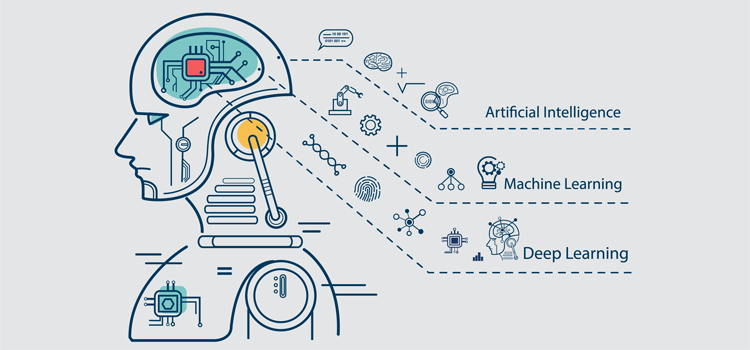The Analytical Edge: Making Meaning of Large Data Sets with AI

In today's rapidly evolving corporate landscape, companies are inundated with an overwhelming volume of information. This reality has led to the necessity for creative solutions that can navigate through large volumes of information, converting it into usable insights. Introducing AI, a powerful tool that is revolutionizing the way companies approach data analysis. By utilizing AI, organizations are not only able to handle large datasets more effectively but also uncover patterns and insights that would have otherwise remained concealed.
The integration of AI into analytic systems provides a major advantage, enabling businesses to make educated choices swiftly and precisely. As competition intensifies and customer expectations evolve, harnessing the capabilities of AI can set organizations apart, driving growth and improving overall performance. From forecasting analytics that forecast market trends to tailored user experiences powered by data insights, the potential of AI in transforming the analytical landscape is undeniable.
Comprehending Massive Data
Massive Data refers to the immense amount of data generated every second from diverse sources such as social networks, sensors, transactions data, and others. This data is noteworthy for its high velocity, variety, and volume, making it challenging to manage and evaluate using traditional methods. Businesses are now facing the challenge of dealing with this immense amount of data to gain valuable insights that can inform strategic decisions.
The significance of massive data lies in its capability to reveal insights, patterns, and connections that might not be identifiable through standard analysis. Organizations that utilize this data can obtain a thorough understanding of consumer behaviors, business developments, and operational effectiveness. However, the immense size and complication of Big Data necessitate sophisticated tools and techniques to handle and evaluate properly.
Machine intelligence has a key role in maximizing the power of Big Data. By utilizing ML processes and data analytics tools, businesses can automate the analysis process, which leads to more rapid and enhanced insights. This not only boosts decision-making processes but also allows companies to stay in front of the rivals by anticipating market shifts and evolving customer needs.
Artificial Intelligence Methods for Analyzing Data
Artificial intelligence offers a range of robust techniques that can substantially enhance data analysis in corporate environments. Machine learning, one of the most recognized AI techniques, enables algorithms to gain knowledge from data patterns and predict outcomes or decisions without specific programming. Companies can utilize controlled learning to forecast sales or customer behavior, while non-supervised learning can help identify patterns in market segmentation or product clustering. machine learning to process vast amounts of data and provide practical information is a game changer for organizations looking to remain competitive.

NLP is another important AI technique that enhances data analysis by deciphering and analyzing human language. Organizations can leverage NLP to gather valuable information from customer feedback, social media, and other text sources. This allows businesses to gain insights into customer sentiment, preferences, and trends. By understanding the nuances of language, AI can help companies craft targeted marketing strategies and improve their products or services based on real-time feedback.
Additionally, AI-powered data visualization tools can convert complex datasets into intuitive and interactive graphics. These tools use algorithms to emphasize key data points and trends, making it easier for decision-makers to comprehend insights quickly. By presenting data in an easily digestible format, organizations can foster better collaboration among teams, enhance reporting processes, and ultimately drive strategic initiatives. With these AI techniques at their fingertips, businesses can unlock the full potential of their data and achieve greater productivity.
Obstacles and Upcoming Trends
As the incorporation of AI into business analytics continues to expand, several challenges emerge. Information privacy and security concerns are at the center, as companies must navigate laws while leveraging vast amounts of data. Balancing the use of AI with moral considerations around data usage is critical, and companies need to ensure they maintain consumer trust while maximizing data insights. Furthermore, the complexities of integrating AI into existing systems can be daunting, requiring substantial investment in tools and education for employees.
In the future, the trends in AI and corporate analytics are encouraging yet necessitate careful consideration. The development of more advanced algorithms will enhance predictive capabilities, allowing organizations to predict market shifts and consumer behavior with increased precision. Additionally, immediate analytics powered by AI can provide organizations with immediate insights, enabling quicker decision-making and improved adaptation to changing circumstances. These advancements will likely lead to heightened competition among businesses striving to remain competitive in their respective markets.
In addition, the future will see an emphasis on human-AI collaboration, where AI tools support human decision-making rather than substitute it. This synergy can drive innovation and improve solutions by combining the calculative power of AI with human insight and creativity. As businesses continue to embrace AI technologies, fostering a culture that promotes collaboration between people and AI will be essential for unlocking the full potential of analytics in driving corporate success.
